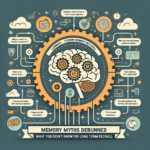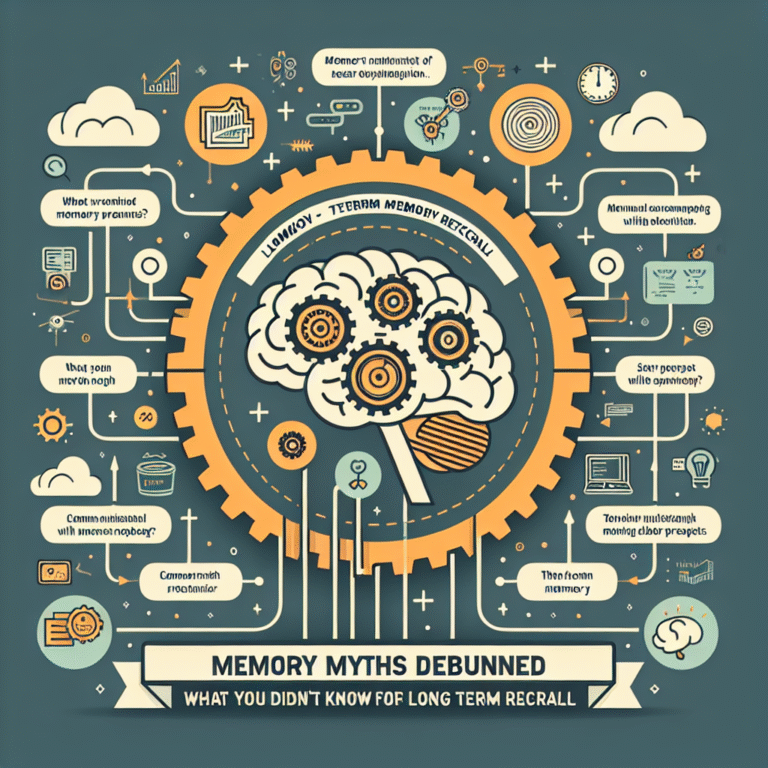
Introduction
Imagine walking into a bustling café, the air filled with a symphony of clinking cups, chatting patrons, and the whirring of a coffee machine. At first, you might feel overwhelmed by the noise, but after just a few moments, you find yourself tuning it out completely. This phenomenon, known as habituation, is fascinating and incredibly relevant to our daily lives. In exploring Habituation in Action: Everyday Examples and Their Implications, we’ll uncover how this psychological process shapes our behavior, influences our emotional responses, and underpins many of our interactions.
Modern life bombards us with stimuli, from the incessant notifications on our phones to the myriad sounds and visuals in our environment. Habituation allows us to adapt to these stimuli, making room for more pressing concerns. But how does it actually work? Why do we tend to ignore certain sounds or sights after repeated exposure? Throughout this article, we’ll dissect real-life examples of habituation, examine its implications in various contexts, and uncover actionable insights on how understanding this phenomenon can improve our lives.
What is Habituation?
Habituation is a simple form of learning in which an organism reduces its response to a repeated stimulus over time. It’s one of the fundamental processes of learning and a cornerstone of behavioral psychology. Initially, a stimulus may provoke a strong reaction, such as surprise or anxiety. However, with repeated exposure, that response diminishes, allowing individuals to conserve energy and focus on more important aspects of their environment.
The Science Behind Habituation
Habituation occurs through a neural process where the brain recognizes a stimulus as non-threatening and updates its response accordingly. This mechanism is crucial for survival; in the wild, animals that can ignore irrelevant stimuli are more likely to survive and reproduce. In essence, habituation in action serves as a filter, managing the flood of information we experience daily.
Everyday Examples of Habituation
1. Urban Noise
In a busy city, the sounds of traffic are omnipresent. New residents may initially find the noise distracting, but over time, they often tune it out entirely. Studies show that long-term city dwellers report less disturbance from noise than newcomers, demonstrating habituation in action.
Implications: Understanding this helps city planners and mental health professionals account for noise pollution’s psychological impacts, emphasizing the importance of green spaces for stress relief.
| Urban Noise | New Resident | Long-Term Resident |
|---|---|---|
| Awareness of noise | High | Low |
| Stress levels | High | Moderate |
2. Scent Aversion
Imagine the aroma of a bakery wafting through your neighborhood. At first, it may make your mouth water, but after a few days of walking by, you hardly notice it. This is habituation in action—a shift in your sensory response.
Implications: This concept is vital in advertising. Marketers often use scents to evoke emotions or drive sales, but overexposure can make the scent ineffective, leading to wasted efforts and resources.
3. Digital Notifications
In our tech-driven society, consistent notifications—from social media, emails, and apps—can lead to notification fatigue. Initially, every ping might spark excitement or curiosity, but repeated exposure leads to individuals ignoring most alerts.
Implications: This shows how habituation in action can affect user engagement metrics for companies, revealing the need for more innovative ways to capture attention in a saturated market.
4. Parenting: The Crying Baby
Parents often experience a heightened response to their own baby’s cries. Over time, however, they learn to differentiate between various cries. What starts as an urgent signal can become a manageable part of their daily routine.
Implications: Insights into this aspect of habituation can improve parental training and provide tools for caregivers to better manage emotional responses.
The Role of Habituation in Therapy
5. Exposure Therapy
Exposure therapy uses habituation principles to treat phobias and anxiety disorders. Gradual exposure to the feared object or situation can lead to reduced fear responses over time.
Case Study: A 30-year-old woman with arachnophobia underwent exposure therapy where she was gradually introduced to spiders, starting with pictures and building up to holding a tarantula. Through this habituation in action, her fear diminished significantly.
| Phobia Type | Initial Response | Post-Therapy Response |
|---|---|---|
| Arachnophobia | Extreme anxiety | Moderate anxiety |
Implications for Brands and Marketing
Consistent exposure to branding and advertisement can lead to habituation, where consumers become desensitized to messages. Habituation in action plays a crucial role in brand recognition; marketers must innovate beyond repetitive ads that fail to catch the consumer’s attention.
Applications in Education
6. Classroom Environments
In educational settings, students may initially be distracted by classroom chatter or environmental speakers. Over time, they learn to ignore these distractions to focus on teaching.
Implications: Educators can utilize this understanding to create more conducive learning environments, knowing that while some distractions may reduce focus, it’s possible to build a tolerance to minor disruptions.
Addressing Common FAQs
1. What is the difference between habituation and sensory adaptation?
Habituation involves a decrease in response to a repeated stimulus, while sensory adaptation refers to a decrease in sensitivity to a constant stimulus. For example, you may stop noticing the sound of a fan (habituation) but still feel its cool breeze (sensory adaptation).
2. How does habituation influence consumer behavior?
As consumers are repeatedly exposed to advertisements, their initial enthusiasm may wane, leading to reduced engagement. Brands must innovate to maintain interest and emotional connection.
3. Is habituation a permanent change?
Not necessarily. Habituation can be reversed; if a stimulus changes (becomes new again), the response can return to its original intensity.
4. Can habituation be applied in the workplace?
Yes, understanding habituation can minimize distraction in the workplace. An awareness of how employees acclimate to noise or interruptions can lead to design changes that foster productivity.
5. How can we leverage habituation for personal growth?
Recognizing areas where you’ve become habituated (such as everyday stressors or negative thought patterns) allows you to become more mindful, facilitating positive changes in your daily routines and responses.
Conclusion
Habituation in Action: Everyday Examples and Their Implications reveal deeply ingrained patterns in our lives that shape our behaviors, perceptions, and emotional responses. By understanding the principle of habituation, we can explore strategies to enhance our daily interactions, decision-making, and overall well-being. From marketers to educators and parents, grasping the nuances of habituation opens up new pathways for improvement that are both practical and transformative.
As you move through your days, take a moment to reflect on what stimuli you’ve become conditioned to ignore. Consider the potential for positive change by actively engaging with aspects of your life that may need fresh attention. Embrace the idea that awareness is the first step in making intentional choices, fostering growth, and enhancing the quality of everyday experiences.
Ultimately, understanding habituation in action not only benefits individuals but can ripple out to improve community living, workplace culture, and relationships, helping us all adapt more efficiently to the world around us. So, seize the opportunity to engage actively with your life—you might just discover that there’s more to appreciate than you initially thought!
















